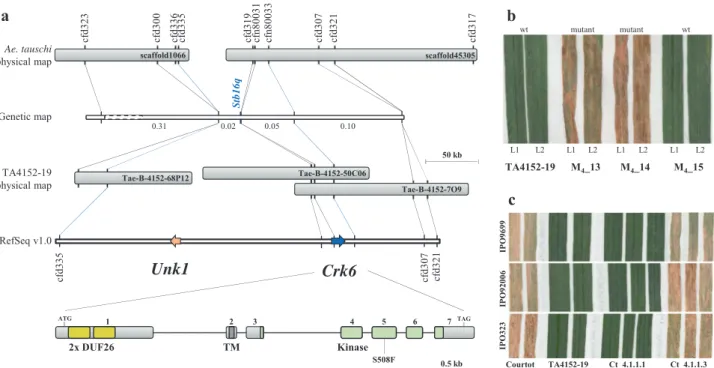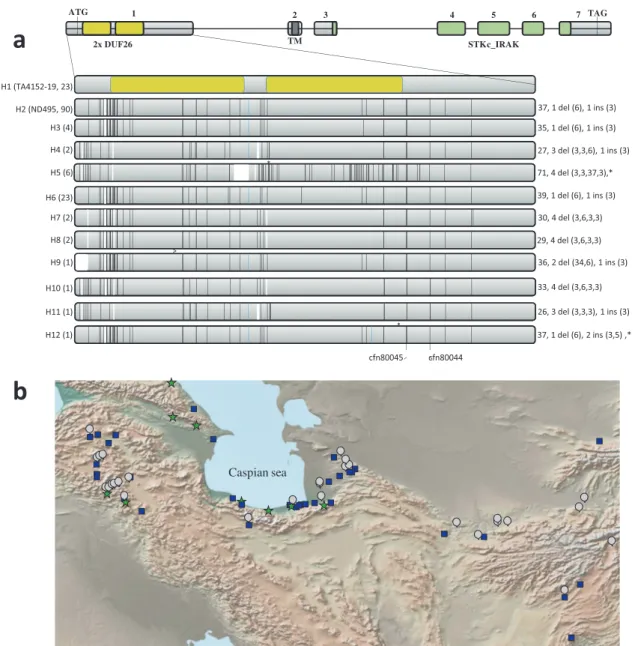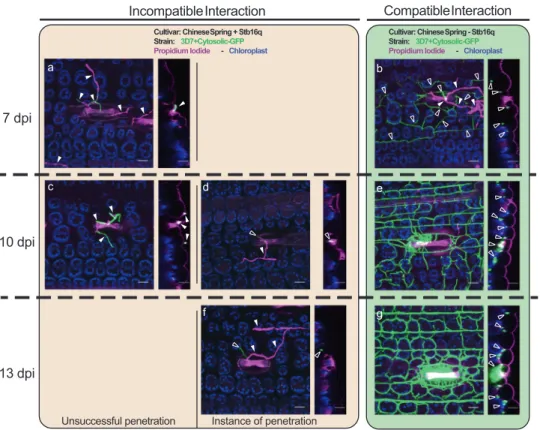A wheat cysteine-rich receptor-like kinase confers broad-spectrum resistance against Septoria tritici blotch
Texte intégral
Figure



Documents relatifs
La consommation de produits phytosanitaires pour le blé tendre est estimée par un indice de fréquence de traitement (IFT) de 3,8 dont 1,5 pour lutter contre les maladies
In infectious context, the activity recorded in Premio NECTAR Céréales®I plants 291.. (1.3 pKat.mg -1 proteins) was significantly higher than in nTnI and nTI conditions,
Keywords Adult-plant resistance Broad spectrum resistance Fusarium head blight Meta-analysis Mycosphaerella graminicola Phaeosphaeria nodorum QTL Septoria tritici blotch
The documents may come from teaching and research institutions in France or abroad, or from public or private research centers.. L’archive ouverte pluridisciplinaire HAL, est
Keywords: Septoria tritici blotch, Zymoseptoria tritici, wheat, fertilization, epidemiology, tolerance, trait-based modeling, virulence, consumer-resource
After transformation we obtained 4 independent homozygous lines and all the lines show resistance against different isolates of rice blast (Magnaporthe oryzae), on
Mycosphaerella graminicola se sont développées sur le milieu de culture (Fig. 12), et aucune différence n’a été observée entre les souches issues du blé dur et les
In our study, although Altigo is more resistant than both other studied cultivars, most of targeted genes were not induced or were repressed in this cultivar during the first 24